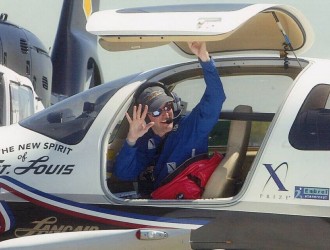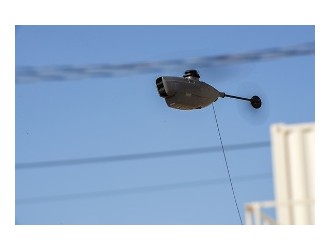
Sikorsky’s Jan. 10 announcement for its customers to inspect immediately their S-92s before flight was prompted by a tail-rotor servo failure that resulted in a dramatic landing of a CHC aircraft on a North Sea rig last month.
The failure, which appears to be traced to a seized bearing in the servos, might have occurred quickly. Just 4.5 flight hours before the accident, the aircraft’s health and usage monitoring system captured the first indication of trouble with the bearing. But detailed analysis did not reveal that until after the accident.
Those are among the key points of an initial assessment of the U.K. Air Accidents Investigation Branch (AAIB), which is investigating the Dec. 28, 2017, incident. The CHC aircraft with two pilots and nine passengers on board spun more than 180 degrees to the right and rolled 20 degrees to the left while landing on the rig more than 100 nm east of Aberdeen, Scotland. The S-92’s left main landing gear gouged the helideck on the Elgin Process, Utilities, Quarters rig before the pilots were able to land the aircraft.
No one was hurt in the incident, but the helicopter had to be hoisted from the helideck to a ship below for return to Aberdeen.
once aircraft panels were removed, “it was immediately apparent that the tail rotor servo piston was damaged,” the AAIB said in a special bulletin issued today. “The servo was removed and revealed that the tail rotor pitch change shaft double-row, angular contact bearing was in a severely distressed condition.”
The investigative body said there were two previous events in which degradation of the tail rotor pitch change shaft led to reduced tail rotor control in flight. Flight crews identified the situations and landed immediately, and Sikorsky subsequently identified the underlying failure causes and introduced a number of safety measures, the AAIB said.
“At this early stage of the investigation, the helicopter manufacturer is not clear whether this bearing degradation is the result of a new root cause, or a previously unidentified failure mode,” the branch said.
The parts from the incident aircraft have been shipped to Sikorsky’s Trumbull, Connecticut, facility for forensic examination. That manufacturer issued a statement today saying it will continue to support the investigation into the root cause of the suspected tail rotor pitch change shaft bearing failure.
The National Transportation Safety Board is participating in the investigation as is a representative of the U.S. The FAA and Sikorsky are serving as technical advisors to the NTSB as permitted under international law.
Prior to shipping the parts to Sikorsky, the AAIB examined them further and found “signs of severe overheating with extreme wear on the inner and outer thrust races and barrel-shaped rollers of the bearing,” it said. The branch added that the roller bearings had seized to the inner thrust race and the outer race roller had excessive axial play (0.5 in).
“The tail rotor driveshaft imparted a torsional load to the tail rotor servo” that caused the primary piston rod to fracture inside the servo. Due to that failure, the secondary piston sleeve separated axially from the primary piston, “with the consequential total loss of control of the tail rotor.”
The AAIB presented the following account.
The accident flight was the second of four planned ones over the North Sea’s Elgin-Franklin Offshore Field that day. The first, from Aberdeen to Elgin Process, Utilities, Quarters was uneventful. But as the helicopter lifted from that rig on a heading of 270 degrees, it yawed unexpectedly to the right through 45 degrees. The helicopter commander (who flew this in the accident flight) applied full left yaw pedal, checked the rotation and landed back onto the deck.
The flight crew discussed the yaw, which they thought had been the result of local turbulence or wind effects of the platform structures (which is not uncommon for this helideck). They decided to continue.
During the subsequent liftoff into hover, the commander applied left yaw pedal. The helicopter responded and turned to the left, and all control responses appeared normal. The commander then climbed to 500 ft for the brief transit to the West Franklin wellhead platform, 3.3 nm to the south. The helicopter made a normal approach and deceleration and crossed over the helideck.
During the descent to land, at about 4 ft above the helideck, the S-92 yawed rapidly to the right, reaching a maximum rate of 30 degrees per second. At the same time, it rolled 20 degrees to the left. At that point, the left main landing gear contacted the helideck. The aircraft continued to yaw to the right on its left main wheels and nose gear before the right main wheels contacted the surface.
The helicopter came to rest on a heading of 041 degrees at about 0844 local time, havin rotated through 187 degrees. The aircraft was shut down and the crew and passengers disembarked; there were no injuries.
Weather at the platform was reported at 0608 as a surface wind from 220 degrees at 17 kt, visibility 10 km or greater, overcast cloud at 2,000 ft and a temperature of 8 degrees C and dew point of 3 degrees C. Pressure was reported at 1038 hPa. No lightning activity was recorded in the area.





